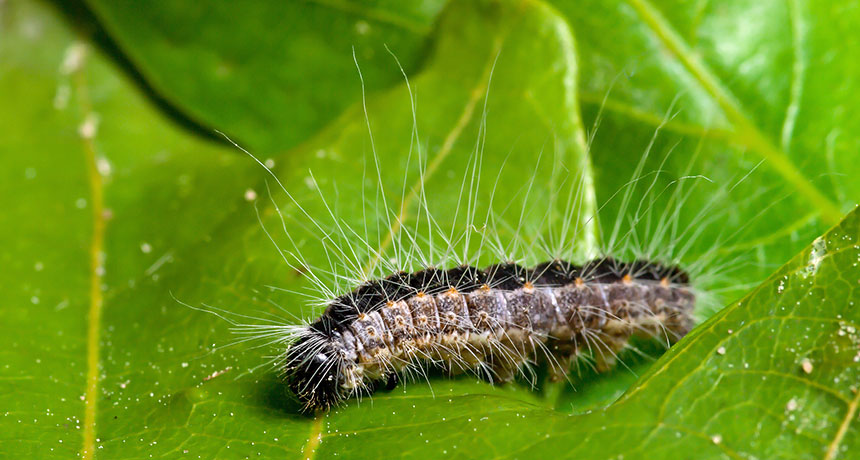These caterpillars march. They fluff. They scare London.

Of course the guy’s wearing a full-body protective suit with face mask and goggles good and snug. He’s about to confront a nest of little fluffy caterpillars.
Insect control can get surreal in the London area’s springtime battle against the young of oak processionary moths (Thaumetopoea processionea). The species, native to southern Europe, probably hitchhiked into England as eggs on live oak trees in 2005, the U.K. forestry commission says.
Adults are just harmless mate-seeking machines in city-soot tones. But when a new generation’s caterpillars finish their second molt into a sort of preteen stage, their short barbed hairs (called setae) can prick an irritating, rash-causing protein into any overconfident fool who pokes them. Even people who’d never torment, or even touch, a caterpillar can suffer as stray hairs waft on spring breezes. (More on that below.)
The caterpillars aren’t much for house cleaning. The baggy silk nest a group spins itself high in several kinds of oak trees accumulates cast-off skins still hairy with the toxic protein.
The name processionary comes from the caterpillars lining up head-to-rump. “A column of caterpillars moving together like a train,” is how evolutionary biologist Jim Costa of Western Carolina University in Cullowhee, N.C., describes it. A little rearrangement can get processions trudging round and round in a circle.
England’s ongoing battle against these oak leaf–stripping caterpillars has gripped the news, but other nations have irritating processions of their own, says entomologist Terrence Fitzgerald of State University of New York at Cortland. One of the London invader’s cousin, called a pine processionary moth (T. pityocampa), may be edging northward in Europe as the climate warms. In the United States, dark and spiky caterpillars of the buck moth Hemileuca maia show up largely unremarked in pockets in the East but are a traditional vexation of spring in New Orleans.
Annoyances aside, these creatures represent part of the glorious but underappreciated social side of insects, Fitzgerald says. Ants, bees, wasps and termites have long been the social insects, but building joint nests and traveling in caravans are just some of caterpillars’ coordinated projects. If fish or birds did that, he grumbles, they’d be acclaimed as “fabulous animals.”
Inspired by this rethink, Costa published The Other Insect Societies. Admittedly caterpillars, too young for sex anyway, don’t have the extreme reproductive specialty of a honeybee queen with a whole caste of sterile workers. But then people don’t either, and we certainly think we’re pretty social. — Susan Milius